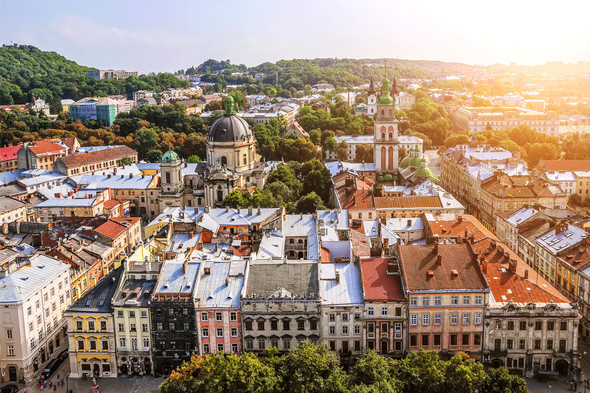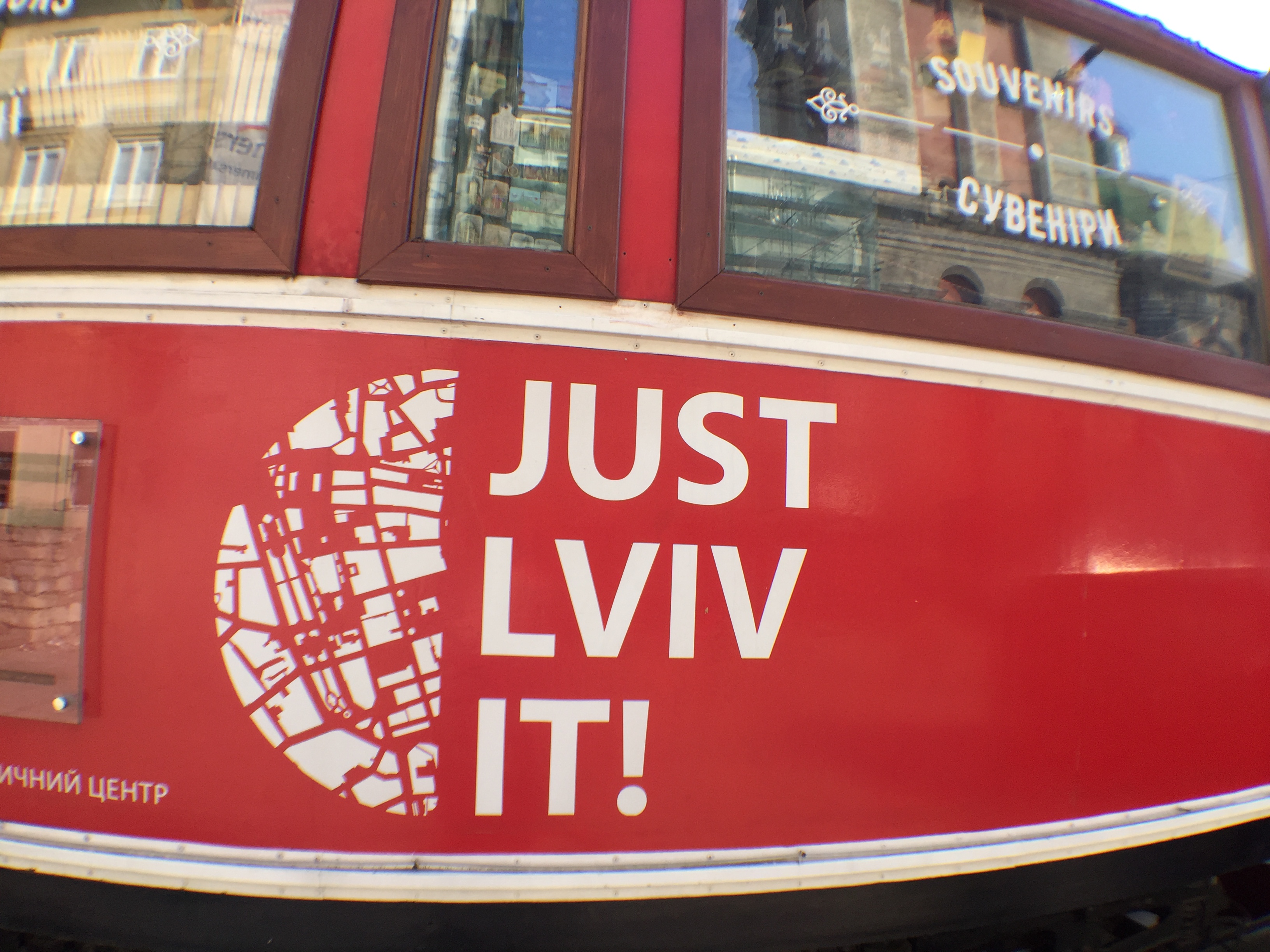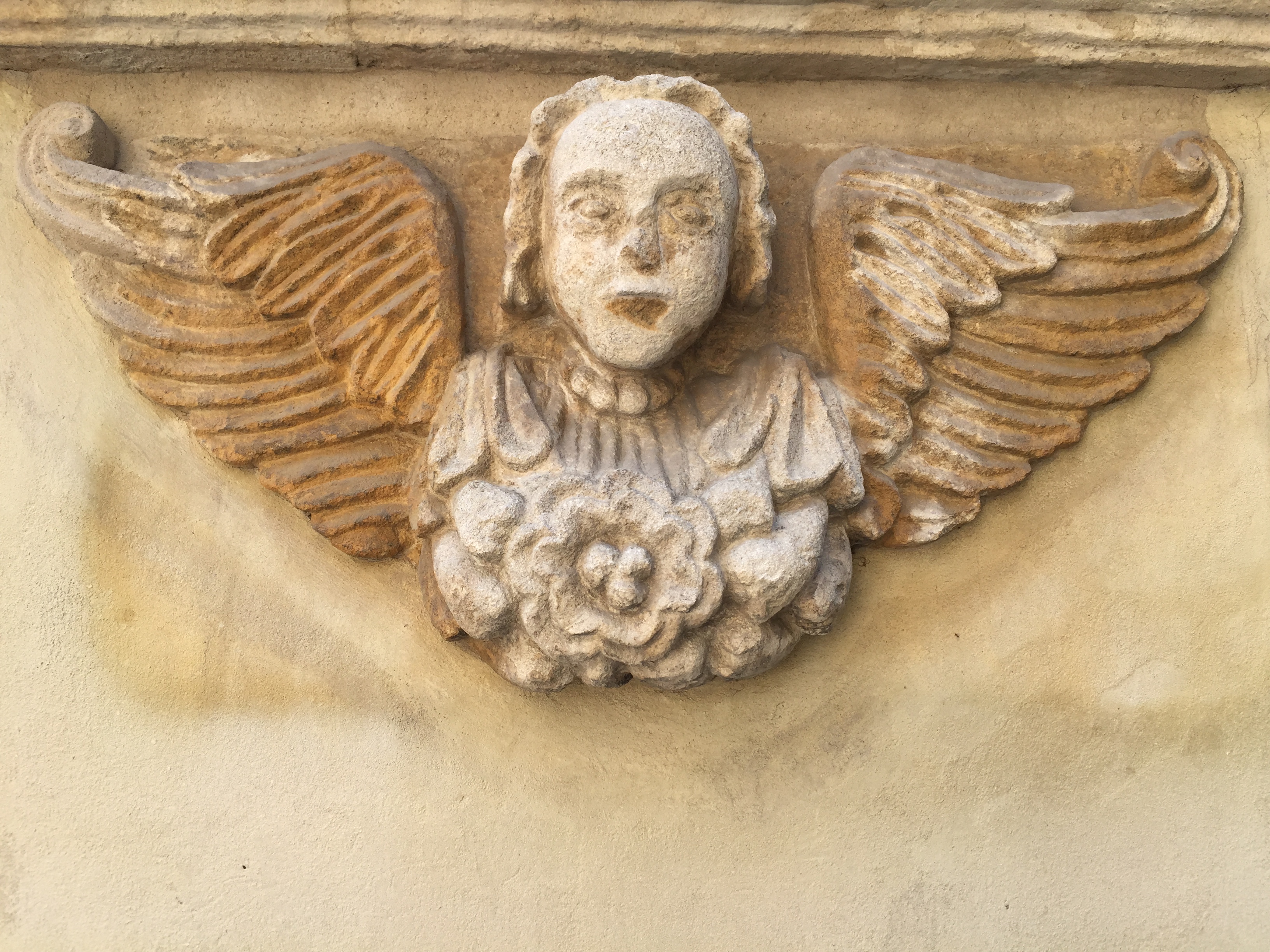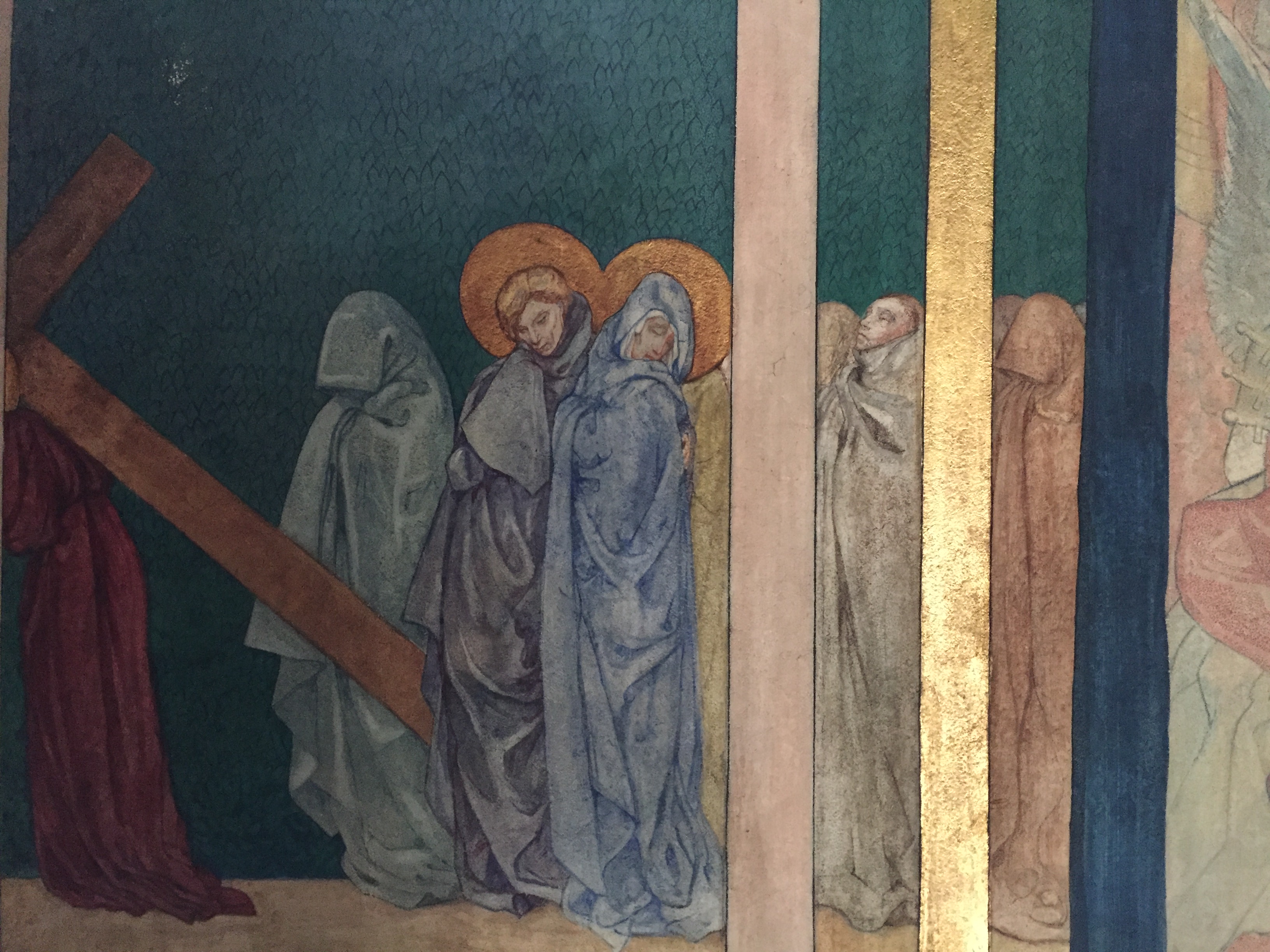Cover pic: Leo Express
There are cities that have been physically destroyed and we can only reconstruct them from stories. In others, the culture that created and defined the city has disappeared. Lemberg was not actually destroyed, yet the culture as well as the people who created it have disappeared. Indeed, not one people, but more. The Armenians, the Jews, the Italians, the Poles, the Germans and the Hungarians. In their place, Ukrainians were moved here from their villages. Lemberg, Lwów, Lemberik, Lvovi, Ilyvó and Leopolis have all disappeared. Only Lviv has remained.
Just Lviv it! (photo: Daniel Ercsey)
The myriad thoughts of my current piece were inspired by art historian friend, Tamás Sajó, which is no wonder. I first went with him to Lviv and as a result, I travelled with him to Chernivtsi and Odessa for the first time too. Without him, I wouldn’t have discovered Lemberg’s alleys, the story of the world’s best-dressed homeless, the kerosene lamp café, the cobblestones in the city centre, the Jewish spirit inscriptions and perhaps the world’s most easterly Sacher Torte. His blog and the Poems of the River Wang provide an inexhaustible source of information for anyone interested. Well, enough about Tamás, let’s move onto the city of Lviv, where I even found some Tokaj wine, following a thorough search!
Lviv angel (photo: Daniel Ercsey)
When, how, but, most importantly, why?
It’s very cold in winter, it’s very hot in summer, says the folk song, and that’s just the case in Lviv. Every summer, the dust rises in Galicia and the houses and the cobblestones emit the heat, while in winter, although the wolves made sightseeing difficult in the past, it’s now only the cold, blowing unobstructed from Siberia that does that. Bruno Schulz, one of the greatest Polish writers of Galician Jewish origin, writes about the local summers in his collected stories:
The marketplace was empty and yellow from the heat of the sun, swept clean of dust by hot winds, like a biblical desert. Thorny acacias that had grown out of the golden square’s emptiness were seething above it with their bright foliage, bouquets of nobly articulated green filigrees, like the trees in old Gobelins tapestries.
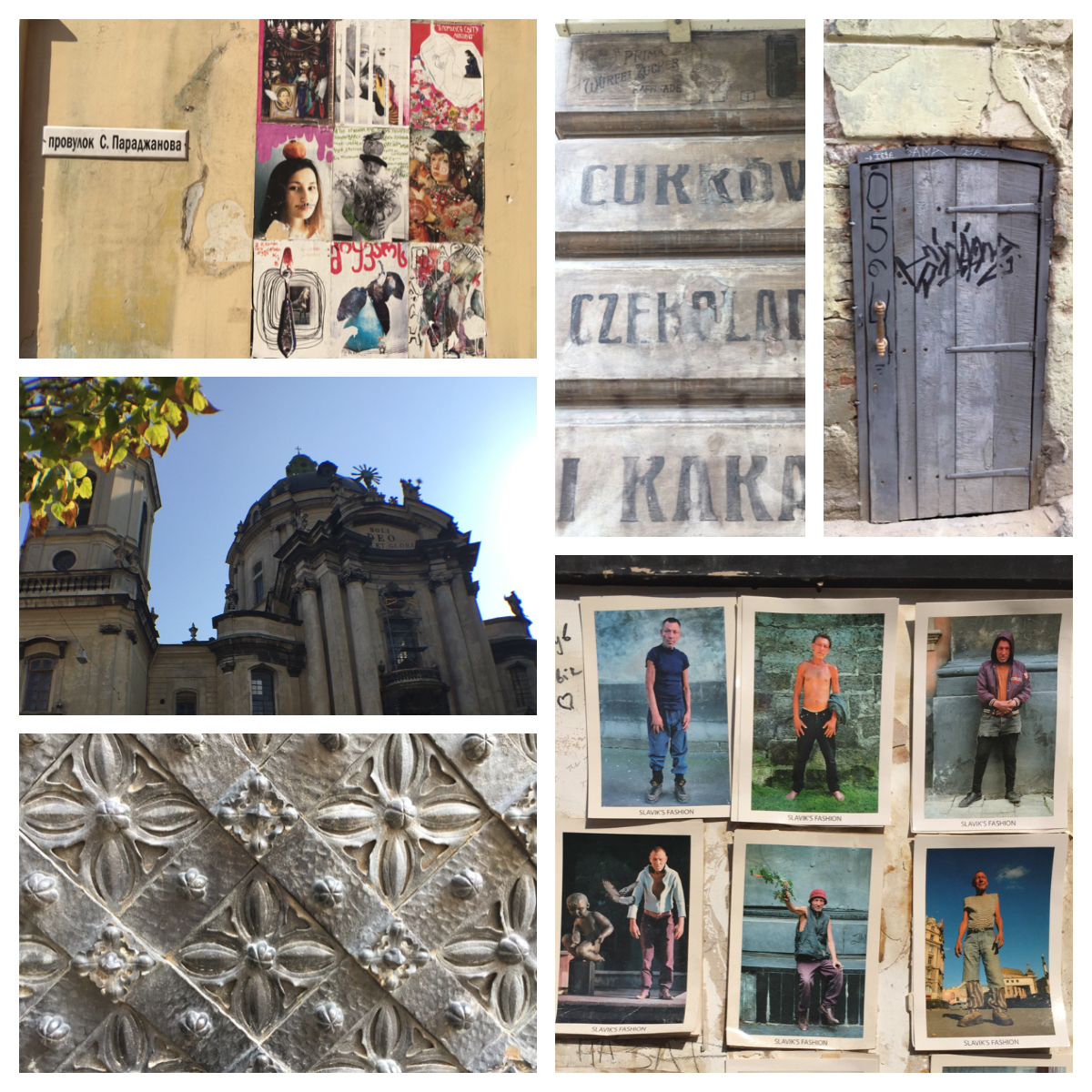
Snapshots from Lviv part 1. (Daniel Ercsey)
So, you’re only left with spring and autumn and train or car for travel. You only have to consider the legendarily bad roads between the Hungarian border and Mukachevo, after that you can put your foot down a bit. Yes, but why go to Lemberg? I could say because of the atmosphere, the wonderful Armenian coffee, the dreams and desires of the people who once lived here, but the poem of the world-famous Polish poet, Adam Zagajewski, To Go to Lvov, is the most expansive.
There was always too much of Lvov, no one could comprehend its boroughs, hear the murmur of each stone scorched by the sun, at night the Orthodox church’s silence was unlike that of the cathedral, the Jesuits baptised plants, leaf by leaf, but they grew, grew so mindlessly, and joy hovered everywhere….
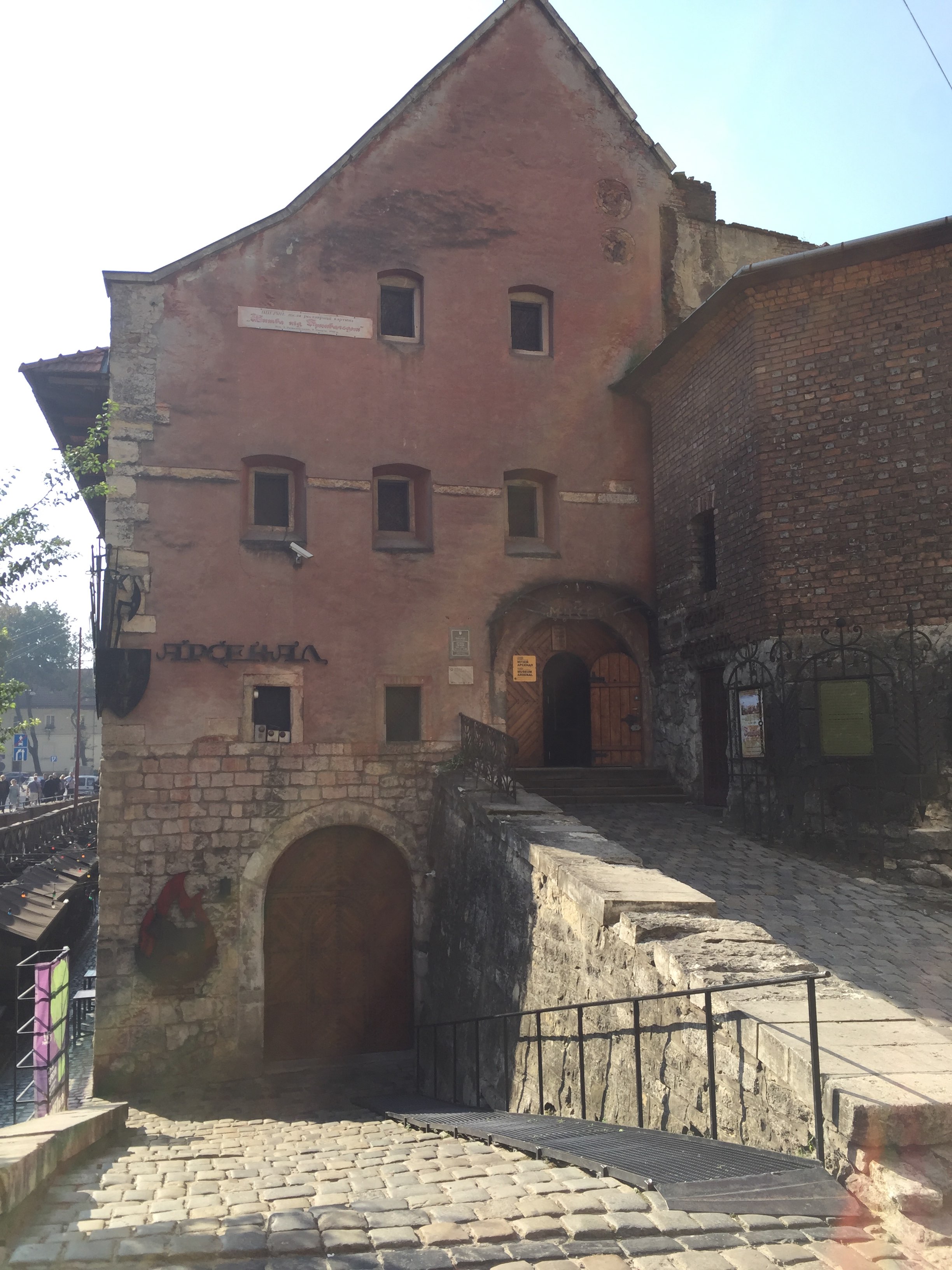
Old building from the 16th Century in the downtown, now it's part of the Lviv Historical Museum (photo: Daniel Ercsey)
Even though six nations had disappeared, the remainder did not then shape the image of the city. On the contrary, Lemberg and Lwów are still sneaking out from under Lviv, its smile is still hiding under the gutters, and the Ukrainian shopkeeper will still greet you in Polish if he sees a foreigner coming into his shop.
Polish music festival in the Rynok square (video: Daniel Ercsey)
What is there to do in Lemberg?
Lose yourself in it for a weekend! Look at the Orthodox, Armenian and Roman Catholic cathedrals and don’t forget to ask the Armenians about the church choir, who also make up the Lviv Opera House choir!
The Armenian priest who sings is a member of the Lviv Opera choir (video: Daniel Ercsey)
Drink some real Armenian coffee in Virmenka, while pondering the fact that the coffee culture of Vienna, Prague and thus the entire Austro-Hungarian Monarchy, or Budapest, is rooted here among the Lwów Armenians. Have lunch at a Georgian fast food restaurant and dine at the elegant Amadeus (the borscht is excellent!) or in the restaurant of the once famous Polish vodka producing family, the Baczewski.
The frescoes in the Armenian cathedral (photo: Daniel Ercsey)
Stroll around the former Jewish quarter, look out for the Yiddish inscriptions that are reappearing from under the plaster, read Sholem Aleichem on the terrace of the Shtuka café while nibbling on Sacher Torte and sipping Viennese melange. Walk around the city centre in the early morning, when it’s just waking up from the revelries which have lasted till dawn, seek out the synagogue’s former site and marvel at the frescoes in the Armenian cathedral, painted by Jan Henryk de Rosen (a Polish freedom fighter who emigrated to France) after Klimt in Art Nouveau style at the request of the Armenian Catholic Archbishop, Jozef Teodorowicz.
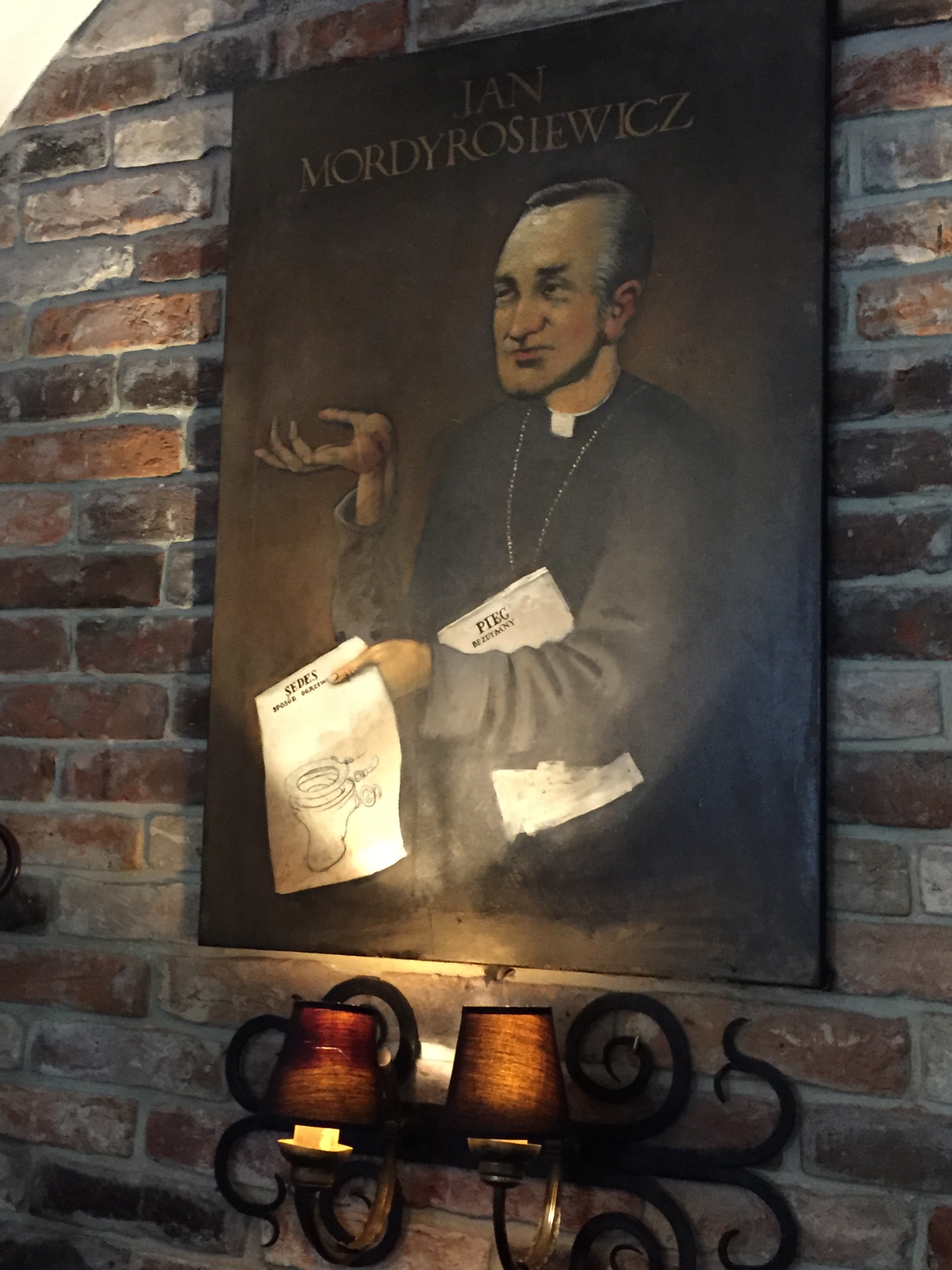
Jan Mordyrosiewicz, an important Lwów Armenian, on the wall of the Armenian restaurant Mons Pius (photo: Daniel Ercsey)
This is Lemberg. Once evening falls, head to a jazz bar, have a beer in the stunning beer theatre or just follow the Ukrainian girls in miniskirts, and sooner or later, you’ll end up in a fancy cherry liqueur bar on one side of the main square.
The Poles, Ukrainians, Jews, Armenians and Germans all played in their own houses of worship, but they spent time together in the taverns: at least they were patient with one another.
– wrote Bogusław Bakuła in Stage, Carnival, Revolution; let’s do the same! Lviv is also a city of wine bars. Although the quality of Ukrainian wine leaves something to be desired, the wine bar on the ground floor and in the cellar of the city-centre Vintage Boutique Hotel has been awarded by Wine Spectator, which is hardly surprising given the hundreds of wines in their Piedmontese wine selection, while in The Room, I also came across a Dereszla Yellow Muscat.
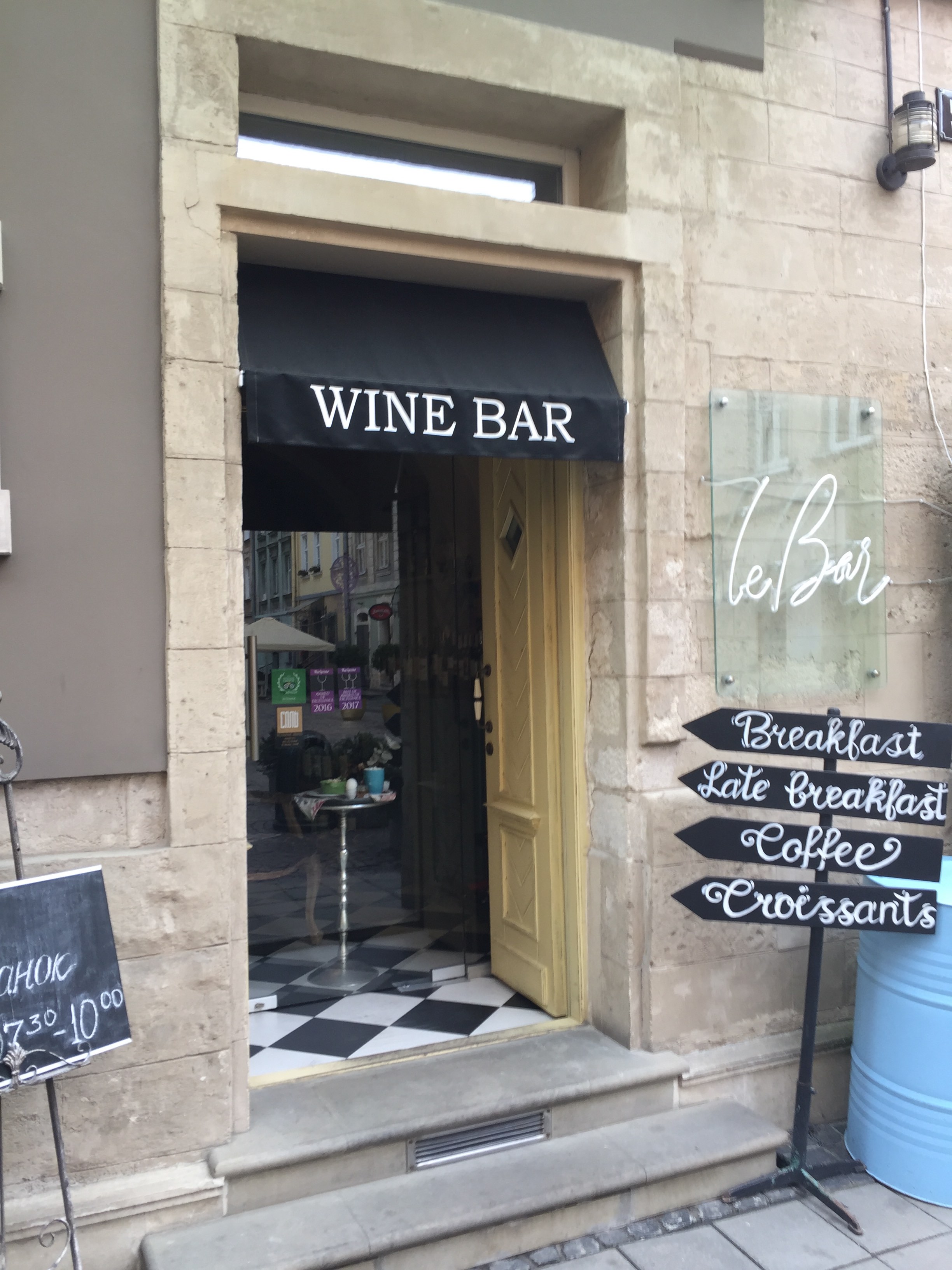
The winebar of the Vintage Boutique Hotel (Daniel Ercsey)
You should take the term wine bar with a pinch of salt, as I also came across ‘wine and coffee’, ‘wine and waffles’, ‘wine and pizza’ and ‘vodka and wine bar’ in the city. It’s fascinating to discover the portrait of Jan Mordyrosiewicz, an important Lwów Armenian, on the wall of the Armenian restaurant Mons Pius, formerly a pawnshop and an orphanage. As director of the orphanage, he bankrupted it thanks to his continual love of experimentation, but he also invented the English WC, which he then sold to the British due to his lack of money. The kerosene lamp café commemorates local Armenian Ignacy Łukasiewicznek and the Hungarian-born Jan Zeh, who invented kerosene here. The café’s rooftop terrace has a wonderful view over the city!
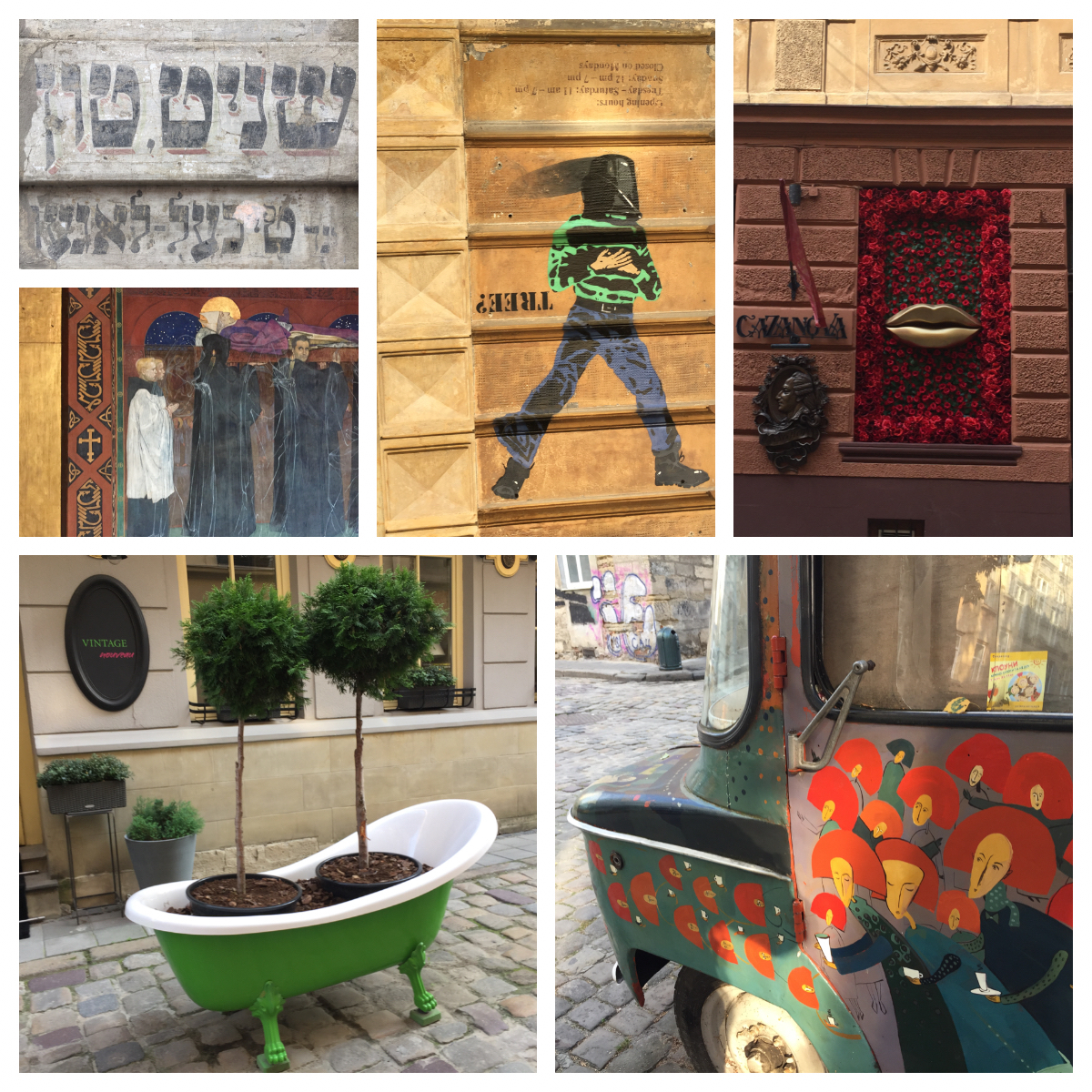
Snapshots from Lviv part 2. (Daniel Ercsey)
Peer into the Boim Chapel, the burial place of the family of some of the city’s most prominent figures, where there is a memorial to famous researcher into China, Michal Boym next to his ancestor György Böhm of Transylvanian Saxon descent, who was Prince Stephen Báthory’s secretary, then a wealthy wine and textile merchant and later mayor of the city. Yet, as well as that, just enjoy yourself in a once-important meeting place between west and east, the multi-ethnic and thousand-faced Lemberg.



